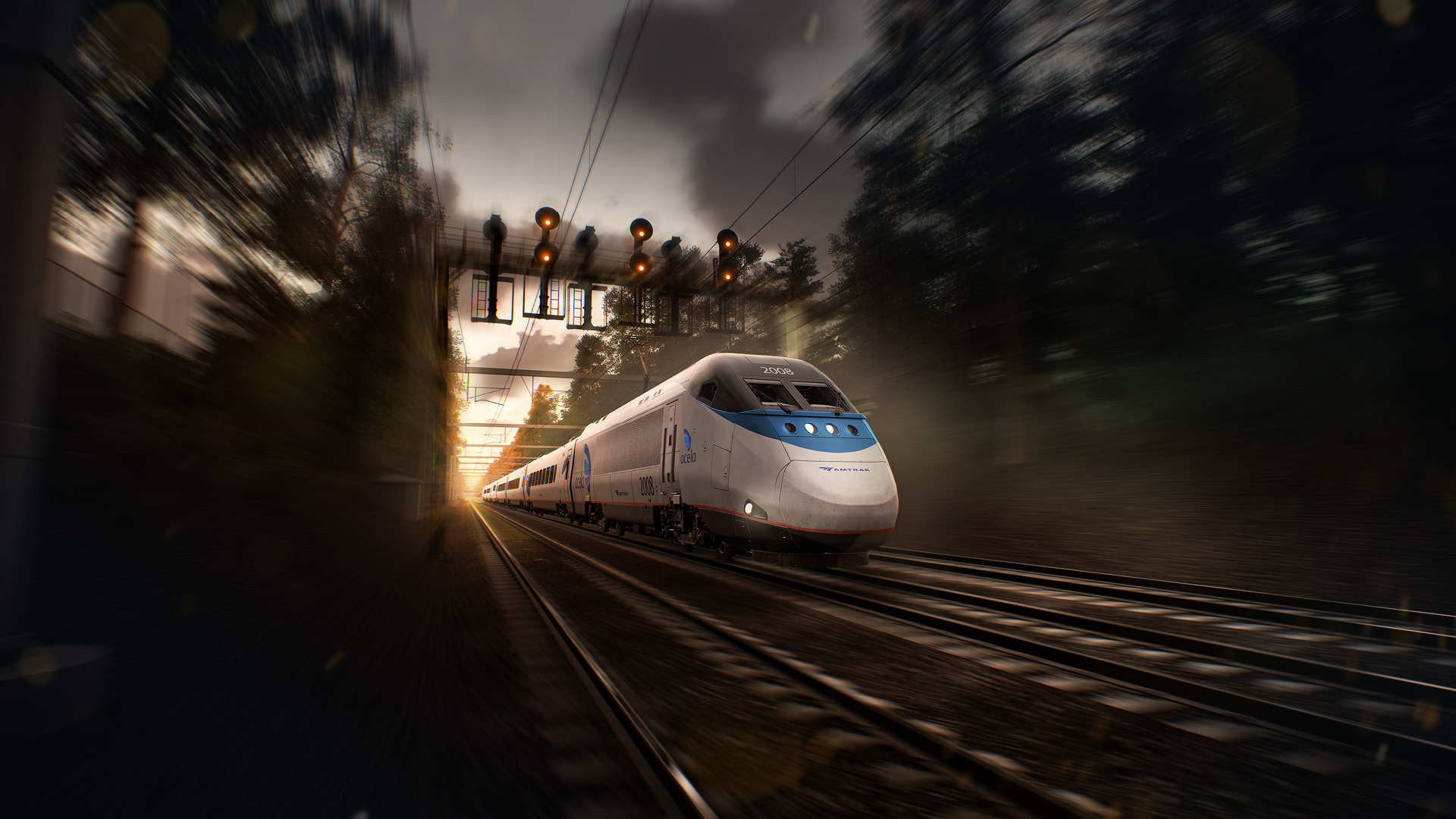Engineer’s Edge: Mastering the Acela – Advanced Techniques for Realism & Control

Welcome to Engineer’s Edge, a new article series diving into the deeper mechanics of rail simulation with Train Sim World. In this first issue, we’re looking at the Amtrak Acela — a high-speed marvel packed with nuance, quirks, and realism. If you want to step up your realism game and drive like a true Northeast Corridor engineer, these tips are for you.
⚙️ 1. Cruise Control Braking – No Brake Handle? No Problem.
Unlike many other trains, the Acela doesn’t have a traditional dynamic brake lever. Instead, you can decelerate using cruise control:
- Set cruise control to a lower speed than your current speed.
- Use the throttle to control the amount of dynamic braking applied.
This method lets you smoothly decelerate without needing the train brake — especially useful for approaching speed restrictions gently and efficiently. It’s less powerful than friction braking but great if used early… and hey, it’s energy-efficient too!
🔁 2. Traction Lock & Blended Braking
When you move the ABCL (train brake) to Minimum Application or beyond, the traction motors switch into braking mode:
- The throttle now controls dynamic braking effort, not acceleration.
- The effort scales with the throttle up to around 34%, reaching ~12 klbf.
- Beyond that, you won’t get more braking unless cruise control is also lowering your speed.
If the dynamic brakes can’t meet the required effort, the system automatically blends in friction brakes. This is where realism really shines — throttle, brake handle, and system logic all work together.
⚡ 3. Dead Sections & MCB Braking
On the Boston–Providence route, there are dead sections where engineers manually open the Main Circuit Breaker (MCB):
- Opening the MCB automatically applies rheostatic braking.
- This effect is modeled in the sim and can be used to manage light speed restrictions.
- Braking continues until around 23 mph, when the effect cuts out.
It’s subtle, but a neat way to brake without touching the friction brakes — and it’s authentic to real-world Acela operation!
❄️ 4. Wheel Slip, Slide & Braking in Bad Weather
The Acela’s speedometer is axle-driven, meaning it reflects wheel rotation, not actual ground speed. In slippery conditions (rain, snow), if your wheels lock or spin, you’ll get false readings — and possibly brake too early or too late.
- Sanding is manual — WSP (Wheel Slide Protection) won’t auto-deploy it unless you’re in emergency braking.
- Brake early in low adhesion conditions — friction is much worse in snow or rain.
Also, the rear power car benefits from drier track due to following other cars. That means better grip and improved braking at the rear — and yes, that’s simulated.
🛑 5. Emergency Brakes, Bugs & Safety Systems
A few extra technical insights:
- If you use emergency brakes, you must move the ABCL to Handle Off before resetting.
- At New York Penn Station (NYT), enable safety systems after setting the reverser forward — prevents bugs.
- Always acknowledge ATC downgrades and make a suppression application if you intersect the alert curve (ADU speed drops).
- Even if you start braking early and avoid the curve, you still must acknowledge the MAS reduction.
🧊 6. Snow Brake in Winter Conditions
In sub-zero temperatures with snow on the tracks, make sure to apply the snow brake every 20 minutes or before a station stop. This keeps the braking surfaces clean and responsive. It's a small detail, but it’s crucial for realistic winter ops.
🎓 Bonus: Learn from the Best
Want a deep dive into ATC, ACSES, and the signaling system on the NEC? Be sure to check out Brandon’s (cActUsjUiCe) in-depth tutorial — it’s one of the best learning resources out there.
✅ Final Thoughts
The Acela isn’t just another train — it’s a high-speed, high-tech challenge that rewards detailed understanding and finesse. Use these techniques to drive with confidence, realism, and full system immersion.
Stay tuned for the next installment of Engineer’s Edge, where we’ll look at more advanced ops — possibly even freight techniques or European safety systems.
Comments (0)
Please log in to leave a comment.
No comments yet. Be the first to comment! 🗣️